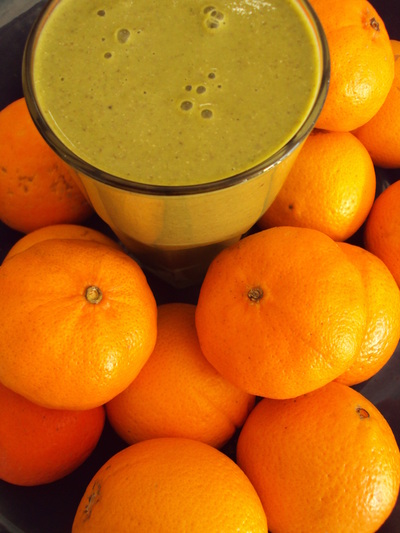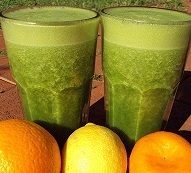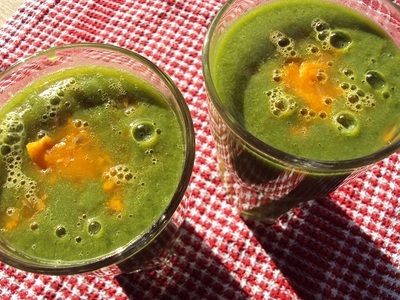Weather Warnings in Force
During Weather Warnings keep updated here:
CURRENT STATUS as of 27/01/17 at 9.15am:
All classes today are going ahead
Merry Christmas & Happy New Year
The team at Sussex Physio Pilates would like to wish you all a very
Merry Christmas and a Happy New Year.
Mannequin Challenge
SPP Mannequin challenge done!!
A HUGE thank-you to our Wednedsay 7.45pm class participants for being such brilliant sports (and Mannequins!).
Brilliant fun!
Note the Christmas socks theme.... and on that note, we are trying to decide which local charity to donate to this Christmas?....
Suggestions please : )
Benefits of Pilates for Back Pain Sufferers
Benefits of Pilates for Back Pain Sufferers
Chartered Physiotherapists have been teaching Pilates for years and use it as part of an effective treatment plan for those patients who suffer from back pain.
Many articles in the past have tried to undermine the benefits of Pilates and some even saying that it can make conditions worse. These articles are usually written by someone outside of the medical profession who have been misinformed and end up giving misguided arguments.
Glenn Withers, Director of APPI (Australian Physiotherapy & Pilates Institute) and Vice-Chair for the Association of Chartered Physiotherapists in Exercise Therapy (ACPET) who are involved in setting standards within the Physiotherapy industry, has for many years strongly disagreed with these articles. As Physiotherapists and Pilates teachers both Glenn and our team here at Sussex Physio Pilates have helped hundreds of patients with back pain, using the Clinical Pilates technique and have recorded their progress and recovery.
Many of the articles talk about sucking the stomach in (abdominal bracing using rectus abdominis - the 6 pack muscle) which drops the pelvic floor and can cause the exerciser to hold their breath (a technique that does not help to support the back).
In Pilates however, the deep lower abdominals are engaged with the pelvic floor to increase spinal stability (as scientific research shows), while continuing to breathe, thus helping support the back.
All of our Pilates teachers are APPI trained and also Chartered Physiotherapists, so they are in the best position to make assessments of patients, relive pain, restore mobility and strengthen through individually tailored treatments.
The benefits of Pilates are huge and below are just a few of them:
- Increased flexibility & mobility
- Improved posture and body alignment
- Decreased stresses and strains on the back
- A decrease in Back Pain!
If you need to book an appointment with one of our Physiotherapists or Pilates teachers, call us now on: 01903 256 500
Diastasis Recti - What, Why and How to Fix it!
So WHAT is Diastasis Recti?
Diastasis Recti occurs when the main abdominal ‘6 Pack’ (the Rectus Abdominis) separates down the middle due to the over-stretching of the line of connective tissue (the linea alba) that joins the 2 sides of the muscle together.
It often occurs in Pregnancy, although not exclusively.
During Pregnancy the rectus abdominis muscle stretches greatly, up to 50cm! This can give a ‘stretch weakness’, which together with an increase in the intra-abdominal pressure (ie. the weight of the baby, womb etc) can cause the muscle to divide.
Sometimes it’s just a small separation, that you may not even realise you have whilst you’re still expecting (or even afterwards).
Other times it’s a wider or longer division, in which case a hernia (bulge) can sometimes be felt or seen.
Either way, you are not alone, as it pretty common, occurring in between 30 – 66% of ALL Pregnancies (Boissonnault & Blaschak 1998).
You are also more at risk if it’s not your 1st baby (and your core was already weakened), if you had a large baby, have a small pelvis or if you did exercises that over-strained the rectus abdominis during pregnancy.
Get a Work Out at Work
Patients sometimes remark that being a Physiotherapist doing assessments and manual therapy 'must keep you fit'.
I agree with them up to a point, it does indeed require a fair amount of physical work to do physiotherapy treatment, but a lot of the movements are quite repetitive. If I miss a lunch break then I might be a bit tired and achy by the end of the day. If I work over a certain number of hours then I'm achy by the end of the week. If I don't do extra fitness such as running or swimming then my upper back gets stiff from leaning over the treatment couch. On balance I would actually say that I need to keep myself fit for my work rather than relying on my job to keep me fit.
I am one of the lucky ones though. I am not sitting at a desk all day and my job does not require long hours of driving, talking on the phone or sitting in meetings. Many people's long tiring days are then finished off with a few precious minutes sitting on the sofa before bed and then the whole cycle starts again without the body having done many movements apart from sitting. So many jobs nowadays can be very sedentary with long hours driven by stressful deadlines and heavy work loads. I see many patients who's musculoskeletal problems seem to be prolonged by their static work postures.
This is why the Chartered Society of Physiotherapy is once again promoting WorkOut@Work (W@W!) for 2016.
http://www.csp.org.uk/news-events/events/workoutwork-2016
This is an established campaign which aims to:
'Inspire employees to address poor work habits e.g. not taking breaks or over-working, and increase levels of physical activity during the working day, so that health is improved and sickness absence reduced.'
In previous years employees have enjoyed a brisk lunch time walk, raised awareness of taking proper breaks away from their desks, completed cycle challenges, work based exercise classes or participated in desk based stretching sessions. These are all ways of creating a bit of variety from static postures, raising the heart rate and enjoying some post work-out endorphins during the working day.
Does this sound like something that your work place could benefit from?
Here at Sussex Physio Pilates we are proactive in promoting exercise as a method for preventing injury and pain.
If you would like more information about 'WorkOut@Work' or maybe some help putting on an event at your work place to promote physical activity among your colleagues, then we would love to hear from you, as we can help get your work force moving and 'Fit for Work'.
Heather Lowman-Riggs
Chartered Physiotherapist
27 marathon's in 27 days, with no training!
Many of you will have been amazed by Eddie Izzard's 27 marathon's in 27 days for Sport Relief.
What makes this feat more remarkable is that his accompanying physiotherapist reports that Eddie's fitness level before the challenge was 'below zero'; he had done no training!
Most of us wouldn't dream of doing anything so ambitious with no training but as the sun comes out, how many of us lace up our trainers intending to get fit again after hibernating all winter and have our good intentions disrupted by injury?
Sometimes this is a matter of doing too much of the same thing too suddenly and our tissues can't adapt quickly enough to tolerate the new activity.
It might be helpful to think about what 'fitness' actually means.
Fitness is not just getting skilful at one type of exercise eg running or weightlifting, but the American College of Sports Medicine (ACSM www.acsm.org) maintains that a combination of these components is essential in healthy adults:
Regular exercise - in order to progress we need to persevere and gradually ask more of our bodies.
Cardiorespiratory- exercise that gets you out of breath
Resistance- strengthening work for all major muscle groups
Flexibility- maintaining muscle compliance and joint ranges
Neuromotor- agility, co-ordination and balance skills
Sometimes in physiotherapy we see injuries where some of these components have been lacking. For example the runner who does regular cardiorespiratory work but has not considered the other three components of fitness.
In this situation their physiotherapist might provide some targeted strengthening exercises, use manual therapy to restore ranges of movement and recommend pilates to address their flexibility and movement control.
If this is you, then now might be a good time to make an appointment for an assessment, before any niggling injuries start to limit your activities.
You might not be planning 27 marathons in 27 days, but whatever your goals, you want to be fit enough to enjoy them without injury!
Blog article written by Heather Lowman-Riggs
Heather is a Physiotherapist at Sussex Physio Pilates and is currently doing her neuromusculoskeletal MSc at Brighton University.
Heather has worked across a broad spectrum of NHS and private sector specialities including a private health club, National League rugby, corporate occupational health and private practice.
She has provided first aid services for numerous rugby events and team physio for various County, National League and local teams.
Heather also has qualifications recognised by England Athletics for running leadership and has supported a local football team with their pre-season conditioning.
www.acsm.org
Garber et al. 2011. Quantity and Quality of Exercise for Developing and Maintaining Cardiorespiratory, Musculoskeletal, and Neuromotor Fitness in Apparently Healthy Adults: Guidance for Prescribing Exercise. Medicine & Science in Sports & Exercise. Volume 43 - Issue 7 - pp 1334-1359
We Have Moved...
It's Official, We Have Moved!
Call now to book your appointment on:
01903 256 500
Green Smoothie Hot Tips! by Kristine Miles
I'm excited to have my first guest blog from Kristine Miles, Author of the best selling 'The Green Smoothie Bible', (as well as fellow Physiotherapist and dear friend)
Here are Kristine's Hot Tips on making Green Smoothies (and if you haven't tired them... they are delicious as well as highly nutritious!):
Kristine Miles is a health professional with over 17 years’ experience. She is passionate about life-long learning, plant based nutrition and living a low toxic lifestyle. Her mission is ‘to promote health and wellbeing, through empowering others to lead lives free of chemicals and full of real, delicious food’. Kristine works as a physiotherapist in private practice, is a part time cooking demonstrator, blog and magazine contributor, and her personal blog. Kristine’s best-selling book ‘The Green Smoothie Bible’ was released in February 2012, her second ‘Green Smoothies For Every Season’ has just been released and she is currently writing a mother and baby smoothie book. She is happily married and lives by the stunning surf coast of Phillip Island, Australia with her husband and daughter.
Given the variation of produce around the world and the huge number of green smoothie recipes available, in my book 'The Green Smoothie Bible', I have arranged all of the recipes into categories. For those passionate about eating with the seasons, there are chapters for spring, summer, autumn, and winter. There are recipes for green smoothies for children, recipes for superfood fans, for those with specific concerns like weight loss or cardiovascular health, and many more. Here are a few guidelines for my green smoothie recipes (in my books) and these will help with your own creation.
Recipes make enough for about 1 litre of green smoothie unless otherwise stated. This is enough for two large 2 servings or 3-4 small servings
Specific types and amounts of greens are not given unless a particular flavour or nutritional benefit is desired
If just ‘greens’ is stated, use whatever raw, leafy greens you like, and as much or as little as you like
If you’re new to green smoothies, start with a small handful of mild greens such as baby spinach, and with time you will naturally increase the amount and variety you use
Use good quality ripe fruit - unripe fruit will make your smoothie taste unpleasant
Try to buy organic produce and, if possible, from farmer’s markets where the produce will be fresher
I also recommend using the best source of water possible and at a minimum, filtered tap water.
Slice or break fruit into appropriate sized pieces for your blender. The larger and more powerful the blender, the larger pieces it will handle, such as quartered apples. Less expensive or small blenders will require smaller pieces of fruit
It’s assumed that fruit such as bananas, mangoes, melons, and papaya are peeled, and that stone fruit and cherries have stones removed
Apples and pears don’t have to cored to go in a high speed blender
Specific blending times are not given, as this will vary among blenders. You will get to know your own blender well and will learn to know when your smoothie is ready
If your blender tends to make your smoothie warm, use ice cubes in place of some of the liquid in a recipe, or use some frozen fruit in place of fresh fruit. Ice blended through a smoothie can also aid the breakdown of particularly fibrous ingredients like whole lemons and celery, to help create a smoother smoothie
Be careful not to regularly consume green smoothies that are very cold to avoid potential digestive strain
Be sure to check the smoothie’s flavour and consistency before serving since ingredients will vary in size, texture, and sweetness.
If it’s too thick, add more water or other liquid
If it’s too thin, add more fruit or 1–2 Tbsp. of chia seeds
If it’s too tart, add sweetener, like stevia, xylitol, agave, honey, dates, or maple syrup
If it’s too bitter, add lemon juice, sweetener, and/or vanilla extract
As you experiment with making green smoothies, you will realize that some ingredients just don’t go well together in smoothies, like pineapple and cacao, or coconut and tomatoes, but there are seemingly limitless green smoothie possibilities, so you’re certain to come upon winning combinations. All of my green smoothie recipes have been designed with flavour and texture pairing in mind. I hope you enjoy them as much as I do!
Kristine Miles
Follow Kristine on Facebook
A Lumbar Roll can helps support you in a good sitting posture
I found this lumbar roll the other day, and think that it's worth sharing; being of a good price (£15), size, not too firm (so it's comfortable!), and pretty well made.
Most people think of a lumbar roll supporting the arch in the back when they are seating at a PC or driving.... that it does, but having your low back in a good posture has a direct effect on your mid-back, neck and shoulder postures. So can help prevent/ relieve postural related pains from these area (ie. your upper trapezius muscles becoming tight and overactive)
Try it and see before you buy.... Make a homemade lumbar roll with a hand towel rolled up in one leg of a pair of tights (and use the other leg to tie it around your chair). The lumbar roll should be positioned in the small of your back (around waist level), with your bottom tucked in under it.
If you feel less stiff and achy in any part of your spine, then a lumbar roll may help you too.









